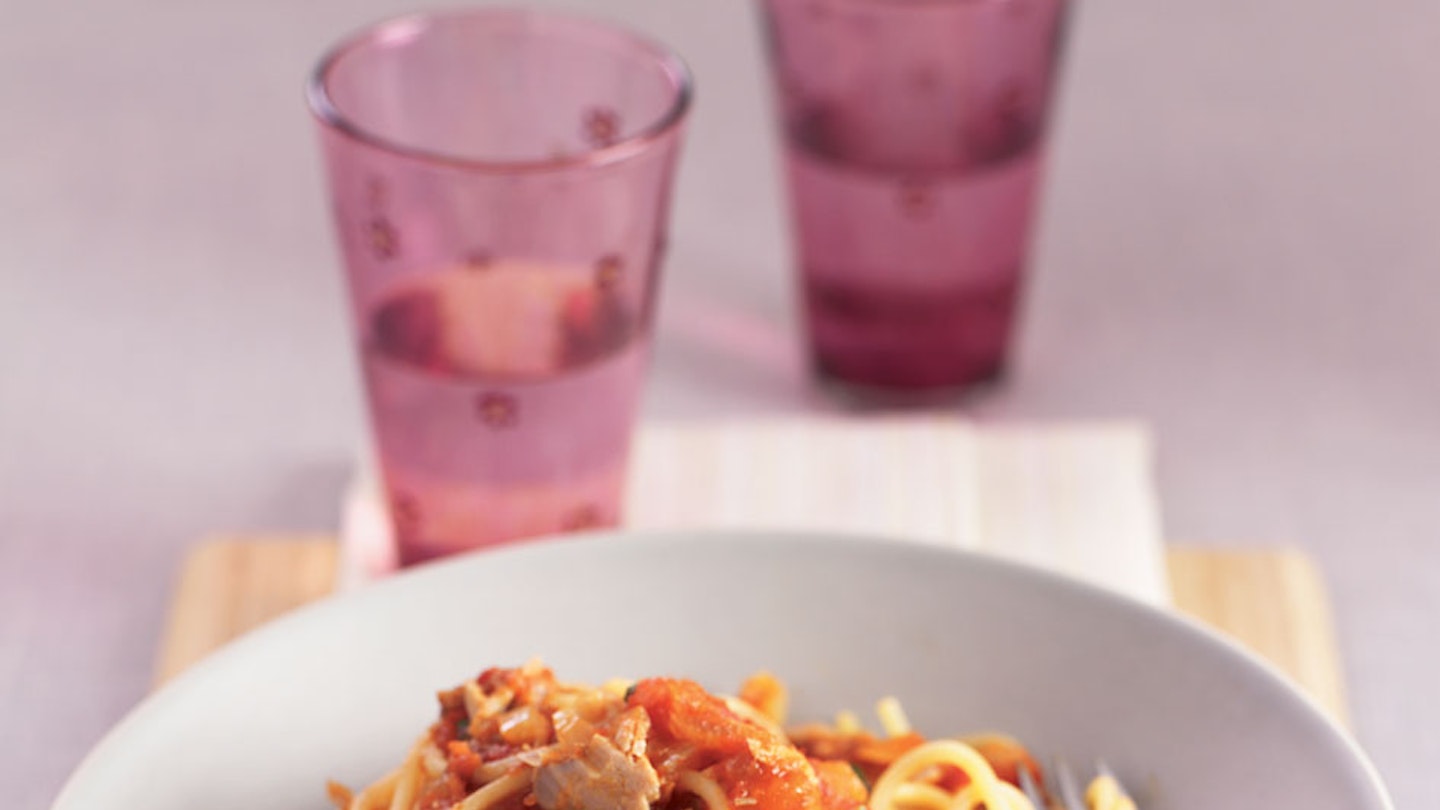Preparation Time
20 Minutes Prepation + 4-5 Hours Cooking
Serves
4
Nutrition
N/A
Puree
Blend some of the tomato tuna mixture until smooth
Finger Food
Give your baby pieces of spaghetti in sauce – messy but fun!
Ingredients
-
1 tbsp olive oil
-
1 onion, chopped
-
2 garlic cloves, finely chopped
-
1 red pepper, cored, deseeded and diced
-
1 tsp smoked paprika
-
¼ - ½ tsp crushed dried red chillies
-
400g can chopped tomatoes
-
150ml vegetable or fish stock
-
200g can tuna in water, drained
-
375g spaghetti
-
salt and pepper
-
To serve:
-
Freshly grated Parmesan cheese
-
basil leaves
Not many people would consider slow-cooking fish, but this method adds lots of flavour to the dish
1. Preheat the slow cooker if necessary; see the manufacturer’s instructions. Heat the oil in a frying pan, add the onion and fry, stirring, for five minutes or until just beginning to turn golden around the edges.
2. Stir in the garlic, red pepper, paprika and dried chillies and cook for two minutes. Mix in the tomatoes, stock and a little salt and pepper. Bring to the boil, then tip into the slow cooker pot.
3. Break the tuna into large pieces and stir into the tomato mixture. Cover with the lid and cook on low for 4–5 hours.
4. When almost ready to serve, bring a large saucepan of water to the boil, add the spaghetti and cook for about eight minutes or until tender. Drain and stir into the tomato sauce. Spoon into shallow bowls and sprinkle with Parmesan and basil leaves to taste.
This recipe is from Hamlyn All Colour: 200 Slow Cooker Recipes by Sara Lewis, published by Hamlyn, £4.99.
